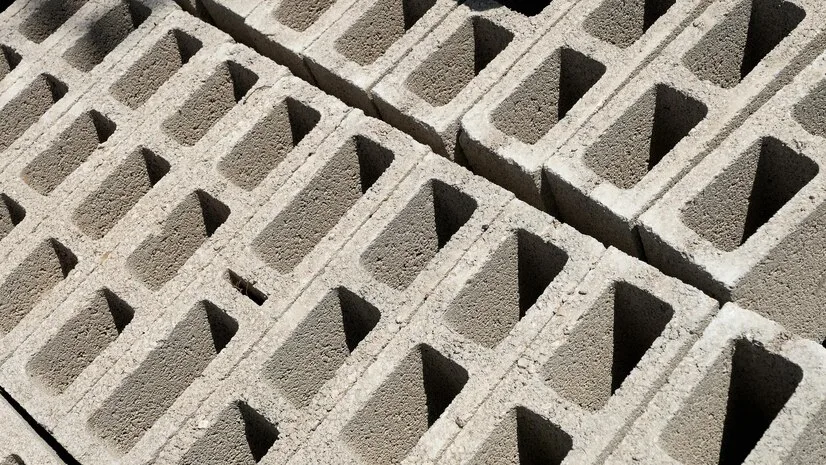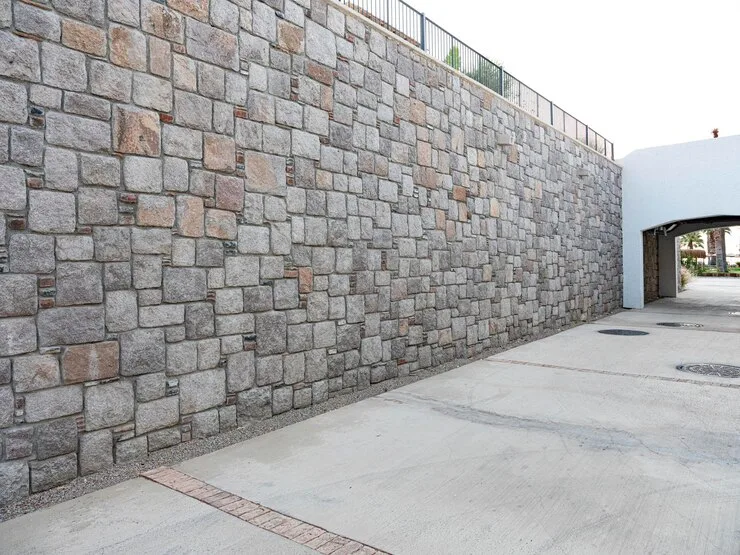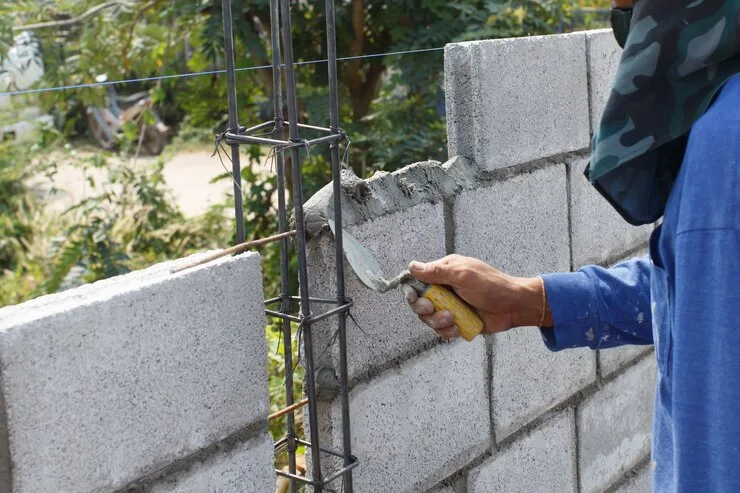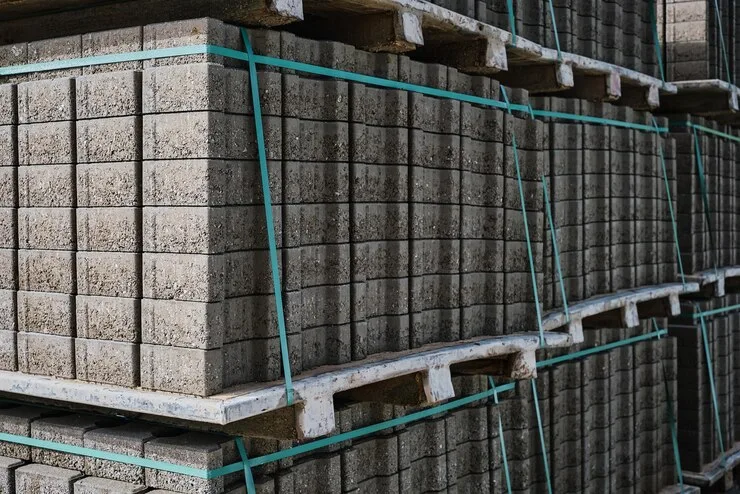
When it comes to creating a sturdy and long-lasting retaining wall, concrete retaining wall blocks are the go-to choice for many homeowners and landscapers. These versatile blocks not only provide structural support but also add aesthetic appeal to any outdoor space. Whether you’re looking to create a terraced garden or prevent soil erosion, concrete retaining wall blocks are an excellent option.
Benefits of Using Concrete Retaining Wall Blocks
Concrete retaining wall blocks offer a range of benefits that make them a popular choice among homeowners and professionals alike. Firstly, these blocks are incredibly durable and can withstand the test of time. They are resistant to harsh weather conditions, such as extreme temperatures and heavy rainfall. Additionally, concrete retaining wall blocks are low-maintenance, requiring minimal upkeep once installed. This makes them a cost-effective and hassle-free solution for retaining walls.
Furthermore, concrete retaining wall blocks are available in various shapes, sizes, and colors, allowing you to customize the look of your outdoor space. Whether you prefer a sleek and modern design or a more rustic and natural appearance, there is a concrete retaining wall block to suit your style. These blocks can also be easily stacked to create different heights and angles, providing flexibility in design.
Factors to Consider When Choosing Concrete Retaining Wall Blocks

Before embarking on your project, there are several important factors to consider when selecting concrete retaining wall blocks. Firstly, you need to determine the purpose of your retaining wall. Are you looking to create a decorative feature or do you require a wall for soil retention? This will help you determine the size, shape, and strength of the blocks you need.
Secondly, consider the overall aesthetics of your outdoor space. Concrete retaining wall blocks come in a variety of textures and colors, so choose ones that complement the existing elements in your landscape. Additionally, make sure the blocks you choose are compatible with the style of your home and surrounding environment.
Lastly, consider the installation process and whether you have the necessary skills and tools to complete the project yourself. If not, it may be worth hiring a professional to ensure the retaining wall is constructed correctly and safely.
Different Types of Concrete Retaining Wall Blocks
Concrete retaining wall blocks are essential components in landscaping, civil engineering, and construction projects, designed to resist the lateral pressure of soil or hold back soil materials. The design and selection of these blocks depend on the specific requirements of the project, such as the height of the wall, the soil conditions, and the aesthetic preferences. Here are the different types of concrete retaining wall blocks commonly used:
Gravity Blocks
These blocks rely on their weight and mass to retain soil. They are typically larger and heavier, making them suitable for retaining higher volumes of soil without the need for additional reinforcement.
Cantilevered Blocks
Designed to leverage the principle of leverage, cantilevered blocks are anchored at the base and extend into the retained soil. They are used for higher walls where the leverage can help resist the soil pressure.
Interlocking Concrete Blocks
These blocks are designed to fit together without the need for mortar. The interlocking system adds stability and strength, making installation easier and faster. They are versatile and can be used for various retaining wall heights.
Counterfort or Buttressed Blocks
These blocks are reinforced with vertical ribs (counterforts) on the rear side of the wall. This design is intended to reduce the shear and bending forces by distributing the load more evenly. They are typically used for taller retaining walls.
Pinned Blocks
Pinned blocks use a pin system or a locking mechanism to create a stable and strong connection between the blocks. This system allows for a more flexible design and can accommodate changes in wall height and alignment.
Hollow Blocks
Hollow concrete blocks are lighter than solid blocks, making them easier to handle and install. They can be filled with gravel or soil to add weight once they are in place, providing additional stability to the wall.
Decorative Blocks
These blocks come in various shapes, colors, and textures to enhance the aesthetic appeal of the retaining wall. They can mimic the look of natural stone, brick, or other materials and are often used in visible areas where the appearance of the wall is important.
Segmental Retaining Wall (SRW) Blocks
SRWs are modular concrete blocks that interlock with each other to form a gravity retaining wall. They can be reinforced with geogrids for additional stability and are known for their flexibility, durability, and ease of installation.
Each type of concrete retaining wall block has its unique features, advantages, and applications. The choice of the block depends on the specific needs of the project, including the height of the wall, the soil conditions, the desired aesthetics, and the budget. Proper selection and installation are crucial for the structural integrity and longevity of the retaining wall.
Installation Process of Concrete Retaining Wall Blocks

The installation process of concrete retaining wall blocks may vary depending on the type of blocks you choose and the complexity of your project. It is essential to follow the manufacturer’s guidelines and consult with a professional if needed.
Generally, the process begins with excavation and leveling of the area where the retaining wall will be constructed. A sturdy and level base is crucial for the stability of the wall. Next, a compacted gravel or crushed stone base is laid, providing a solid foundation for the blocks.
Once the base is in place, the first row of concrete retaining wall blocks is laid. Each block should be leveled horizontally and vertically to ensure a straight and sturdy wall. As you continue to stack the blocks, make sure to interlock them securely, using adhesive or pins if necessary.
Finally, backfill the area behind the wall with gravel or soil, compacting it as you go. This will provide additional support and prevent soil erosion. Proper drainage is also essential to prevent water buildup behind the wall, so consider installing a drainage system if needed.
Tips for Maintaining and Caring for Concrete Retaining Wall Blocks

To ensure the longevity and appearance of your concrete retaining wall blocks, it is essential to follow proper maintenance and care practices. Regularly inspect the wall for any signs of damage, such as cracks or shifting blocks. Small issues should be addressed promptly to prevent further damage.
Additionally, keep the area around the retaining wall free from excessive vegetation or debris. Overgrown plants and tree roots can exert pressure on the wall, potentially causing it to shift or crack. Regularly trim any vegetation and remove debris to maintain the integrity of the wall.
If your concrete retaining wall blocks have a textured surface, consider applying a sealant to protect them from stains and discoloration. This will also make cleaning easier, as you can simply wash the blocks with water and mild detergent.
Comparing Different Brands and Manufacturers of Concrete Retaining Wall Blocks
When choosing concrete retaining wall blocks, it is important to compare different brands and manufacturers to ensure you are getting a high-quality product. Look for reputable companies that have a proven track record of producing durable and reliable blocks.
Consider factors such as the materials used, manufacturing process, and customer reviews. It is also worth visiting local suppliers or showrooms to see the blocks in person and get a better sense of their quality and appearance.
Cost Considerations When Purchasing Concrete Retaining Wall Blocks
The price of concrete retaining wall blocks can change based on their name, size, and shape. When you decide what to buy, you should think about how much money you have. While it may be tempting to opt for cheaper blocks, keep in mind that quality and durability should be a priority.
In addition to the cost of the blocks themselves, factor in the cost of installation, including any additional materials or tools required. If you are hiring a professional, obtain multiple quotes to ensure you are getting a fair price.
Frequently Asked Questions
A: Yes, many homeowners successfully install concrete retaining wall blocks themselves. However, it is important to have the necessary skills and tools for the job. If you’re not sure, it’s best to talk to a professional.
A: Concrete retaining wall blocks can last for several decades if properly installed and maintained. However, it is important to regularly inspect the wall for any signs of damage and address them promptly.
A: Yes, some concrete retaining wall blocks are designed to create curved walls. These blocks have a special shape that allows them to be easily arranged in a curved pattern.
Conclusion

Concrete retaining wall blocks are an excellent choice for creating sturdy and visually appealing retaining walls. By considering factors such as the purpose, aesthetics, and installation process, you can choose the perfect blocks for your project. Remember to properly maintain and care for your concrete retaining wall blocks to ensure their longevity. With the information provided in this ultimate guide, you are well-equipped to make an informed decision and create a beautiful and functional retaining wall for your outdoor space.
For more information about concrete retaining wall blocks and to find the perfect blocks for your project, contact Rhino Concrete Bay Area today.







